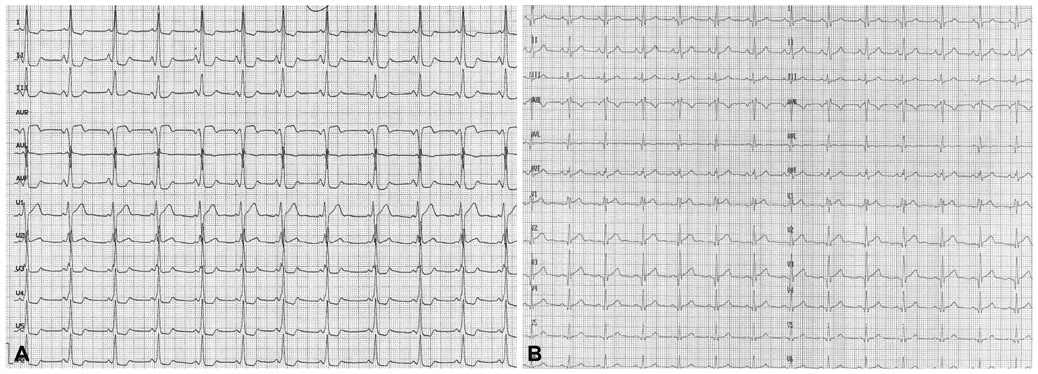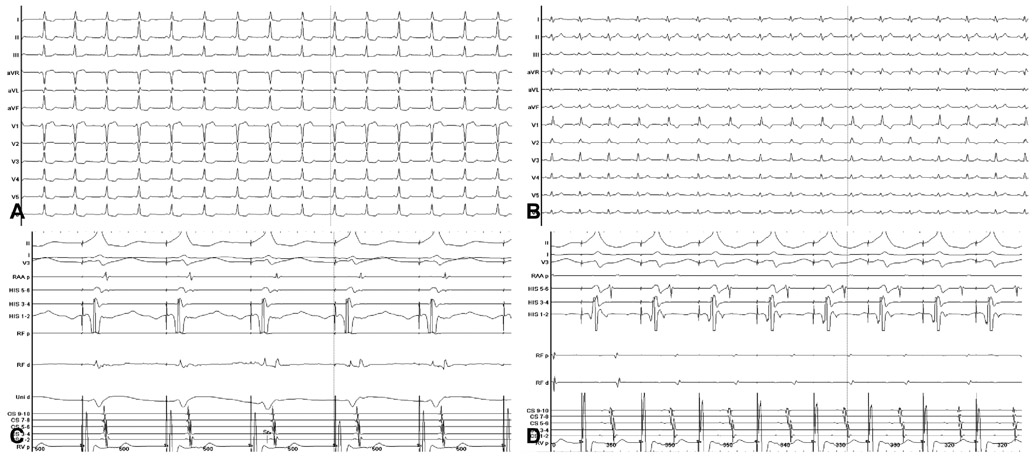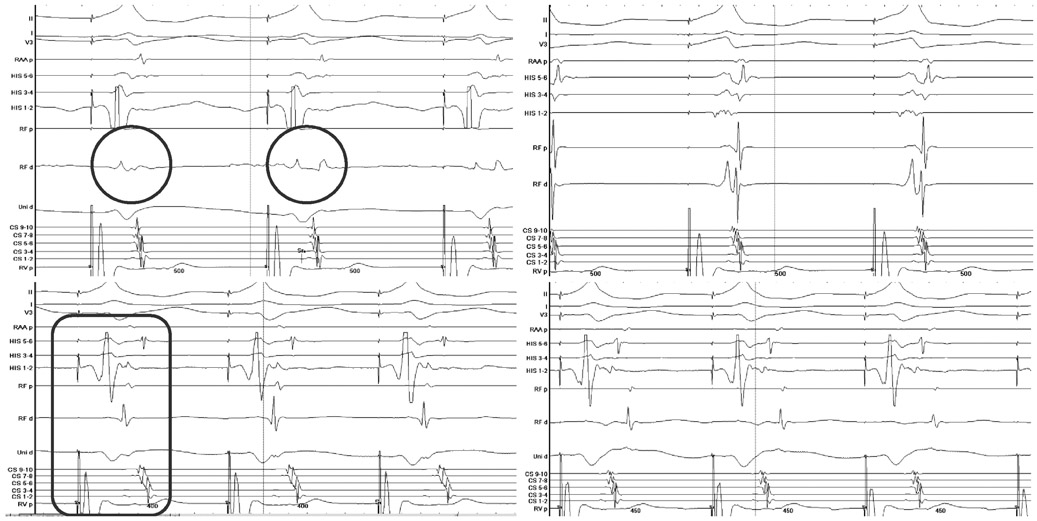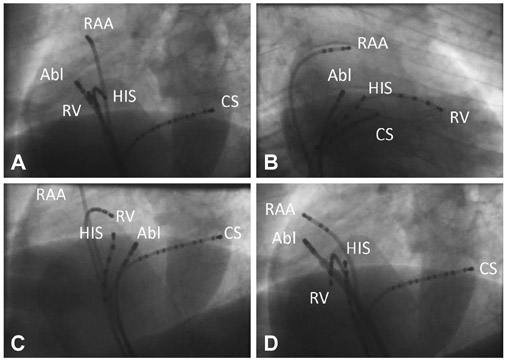Korean Circ J.
2013 Feb;43(2):115-118. 10.4070/kcj.2013.43.2.115.
Catheter Ablation of Multiple Accessory Pathways in Duchenne Muscular Dystrophy
- Affiliations
-
- 1Krankenanstalt Rudolfstiftung, Vienna, Austria. fifigs1@yahoo.de
- 2Second Medical Department, Krankenanstalt Rudolfstiftung, Vienna, Austria.
- KMID: 1769647
- DOI: http://doi.org/10.4070/kcj.2013.43.2.115
Abstract
- A 23-year-old male with Duchenne muscular dystrophy (DMD) experienced self-limiting palpitations at age 19 years for the first time. Palpitations recurred not earlier than at age 23 years, and were attributed to narrow complex tachycardia, which could be terminated with adenosine. Since electrocardiography showed a delta-wave, Wolff-Parkinson-White (WPW) syndrome was diagnosed, ajmaline prescribed and radio-frequency catheter ablation of three accessory pathways carried out one week later. One day after ablation, however, a relapse of the supraventricular tachycardia occurred and was terminated with ajmaline. Re-entry tachycardia occurred a second time six days after ablation, and as before, it was stopped only with ajmaline. Despite administration of verapamil to prevent tachycardia, it occurred a third time four months after ablation. This case shows that cardiac involvement in DMD may manifest also as WPW-syndrome. In these patients, repeated radio-frequency catheter ablation of accessory pathways may be necessary to completely block the re-entry mechanism.
MeSH Terms
Figure
Reference
-
1. Finsterer J, Stöllberger C. The heart in human dystrophinopathies. Cardiology. 2003. 99:1–19.2. Agarwal RK, Misra DN, Verma RK. Wolff-Parkinson-White syndrome with paroxysmal atrial fibrillation in pseudohypertrophic muscular dystrophy (Duchenne type). Indian Heart J. 1973. 25:346–348.3. Finsterer J, Stöllberger C, Quasthoff S. Wolff-Parkinson-White syndrome as initial manifestation of Becker muscular dystrophy. Herz. 2008. 33:307–310.4. Symons AL, Townsend GC, Hughes TE. Dental characteristics of patients with Duchenne muscular dystrophy. ASDC J Dent Child. 2002. 69:277–283. 2345. Weiss C, Jakubiczka S, Huebner A, et al. Tandem duplication of DMD exon 18 associated with epilepsy, macroglossia, and endocrinologic abnormalities. Muscle Nerve. 2007. 35:396–401.6. Kirchmann C, Kececioglu D, Korinthenberg R, Dittrich S. Echocardiographic and electrocardiographic findings of cardiomyopathy in Duchenne and Becker-Kiener muscular dystrophies. Pediatr Cardiol. 2005. 26:66–72.7. Sethi KK, Dhall A, Chadha DS, Garg S, Malani SK, Mathew OP. WPW and preexcitation syndromes. J Assoc Physicians India. 2007. 55:Suppl. 10–15.8. Cay S, Topaloglu S, Aras D. Percutenous catheter ablation of the accessory pathway in a patient with wolff-Parkinson-white syndrome associated with familial atrial fibrillation. Indian Pacing Electrophysiol J. 2008. 8:141–145.9. Bodalski R, Maryniak A, Walczak F, Szumowski L, Jedynak Z. [Glass of water or ablation?-episodes of malignant atrial tachyarrhythmias during swimming in a lake in a woman with overt Wolff-Parkinson-White syndrome and benign palpitations for several decades of life]. Kardiol Pol. 2008. 66:1346–1349.10. Tischenko A, Fox DJ, Yee R, et al. When should we recommend catheter ablation for patients with the Wolff-Parkinson-White syndrome? Curr Opin Cardiol. 2008. 23:32–37.11. Ghosh S, Rhee EK, Avari JN, Woodard PK, Rudy Y. Cardiac memory in patients with Wolff-Parkinson-White syndrome: noninvasive imaging of activation and repolarization before and after catheter ablation. Circulation. 2008. 118:907–915.12. Light PE. Familial Wolff-Parkinson-White Syndrome: a disease of glycogen storage or ion channel dysfunction? J Cardiovasc Electrophysiol. 2006. 17:Suppl 1. S158–S161.
- Full Text Links
- Actions
-
Cited
- CITED
-
- Close
- Share
- Similar articles
-
- A clinical study on Duchenne muscular dystrophy
- Duchenne Muscular Dystrophy Complicated With Dilated Cardiomyopathy and Cerebral Infarction
- A Clinical Study on Duchenne Muscular Dystrophy in Childhood
- Duchenne Type Muscular Dystrophy: Report of 8 Cases
- Carrier detection of duchenne muscular dystrophy with closelylinked RFLPs.





